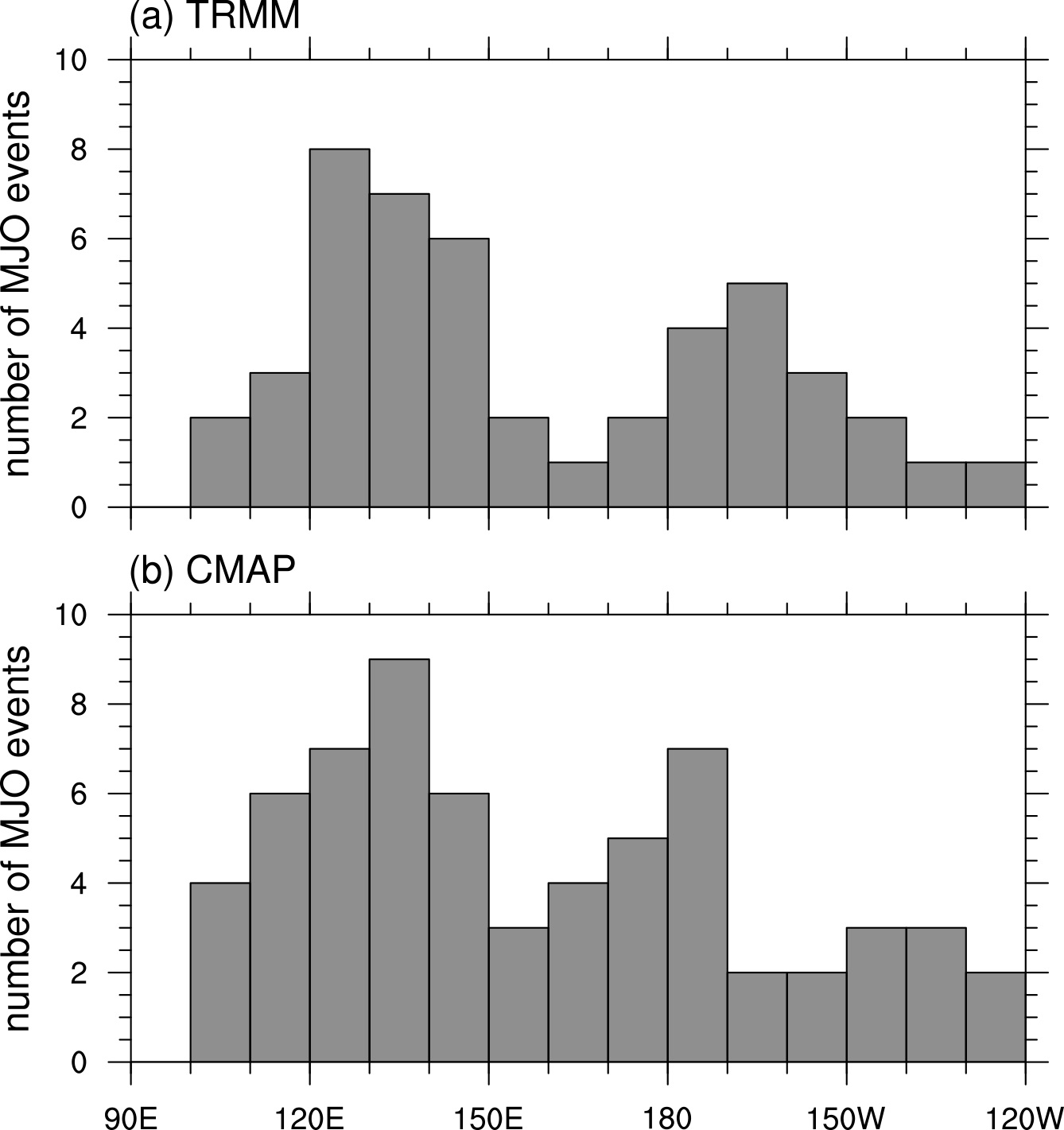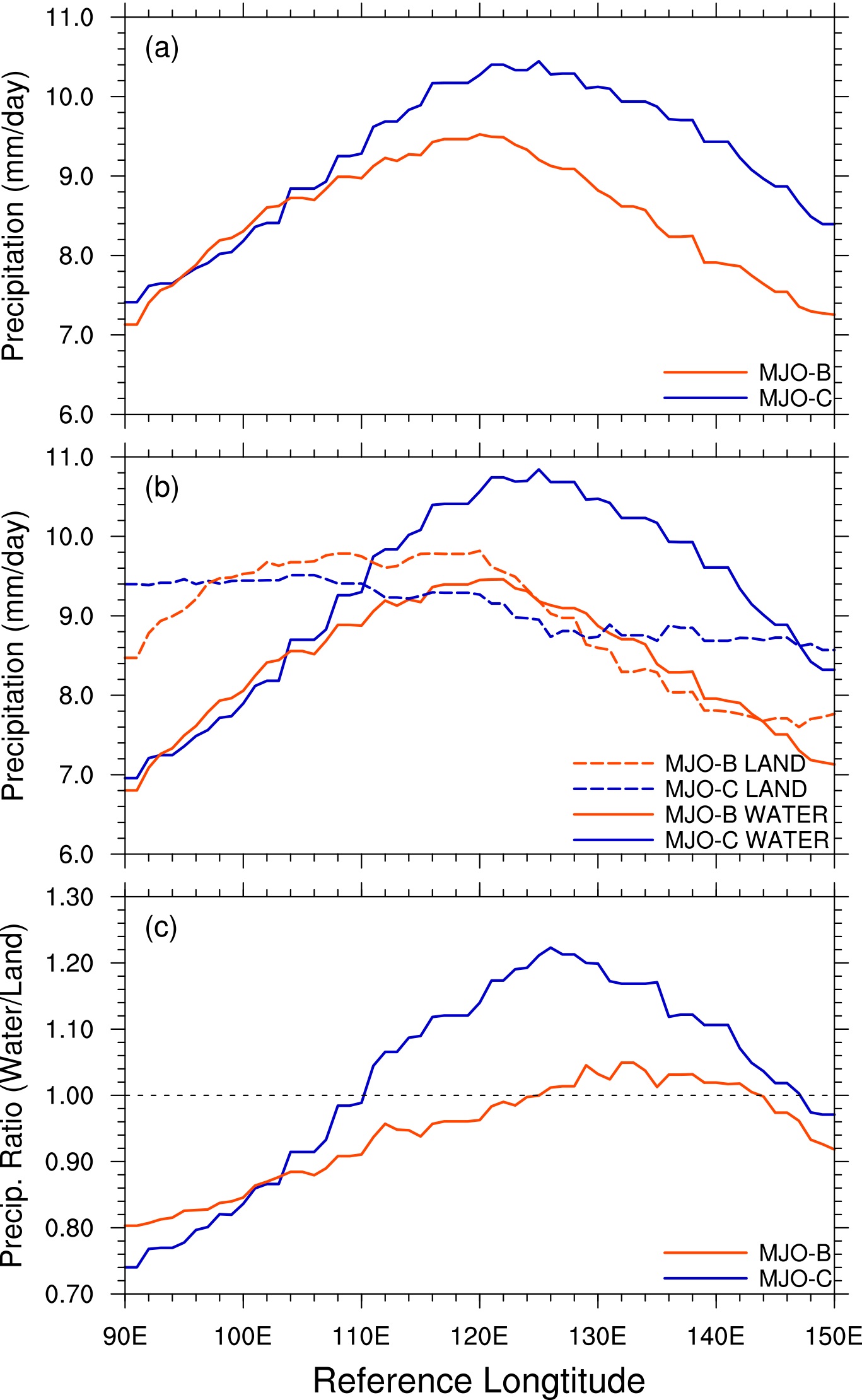State Key Laboratory of Numerical Modeling for Atmospheric Sciences and
Geophysical Fluid Dynamics (LASG)
Institute of Atmospheric Physics, Chinese Academy of Sciences

Vol. 2/No.2 April 2017
[Climate Dynamics]Barrier Effect of the Indo-Pacific Maritime Continent on the MJO: Perspectives from Tracking MJO Precipitation
Explanations for the barrier effect of the Indo-Pacific Maritime Continent (MC) on the MJO should satisfy two criteria. First, they should include specific features of the MC, namely, its intricate land-sea distributions and elevated terrains. Second, they should include mechanisms for both the barrier effect and its overcoming by some MJO events. Guided by these two criteria, we applied a precipitation-tracking method to identify MJO events that propagate across the MC (MJO-C) and those that are blocked by the MC (MJO-B). About a half of MJO events that form over the Indian Ocean propagate through the MC. Most of them (> 75%) become weakened over the MC. The barrier effect cannot be explained in terms of the strength, horizontal scale, or spatial distribution of MJO convection when it approaches the MC from the west. A distinction between MJO-B and MJO-C is their precipitation over the sea vs. land in the MC region. MJO-C events rain more over the sea than over land, whereas land rainfall dominates for MJO-B. This suggests that inhibiting convective development over the sea could be a possible mechanism for the barrier effect of the MC. Preceding conditions for MJO-C include stronger low-level zonal moisture flux convergence and higher SST in the MC region. Possible connections between these large-scale conditions and the land vs. sea distributions of MJO rainfall through the diurnal cycle are discussed.

Figure 5 Zonal distributions of ending longitudes of tracked MJO events that starts over the Indian Ocean based on the (a) TRMM and (b) CMAP precipitation data.

Figure 12 (a) TRMM precipitation as a function of longitudes over which tracks of MJO-C (blue) and MJO-B (red) pass. (a) Averages over the MC (15˚S-15˚N, 100-150˚E), (b) averages over water (solid lines) and land (dashed) in the MC, and (c) ratio of averaged precipitation over water to land.
URL:http://journals.ametsoc.org/doi/abs/10.1175/JCLI-D-16-0614.1
E-mail: lasg_newsletter@lasg.iap.ac.cn
Editors: Chuanyi Wang (wangcy@lasg.iap.ac.cn), Kangjun Chen(ckj@lasg.iap.ac.cn)